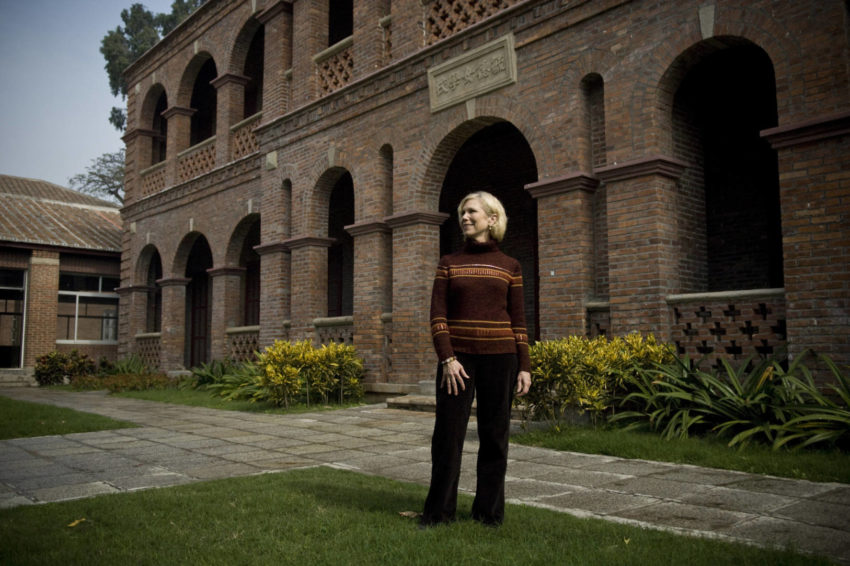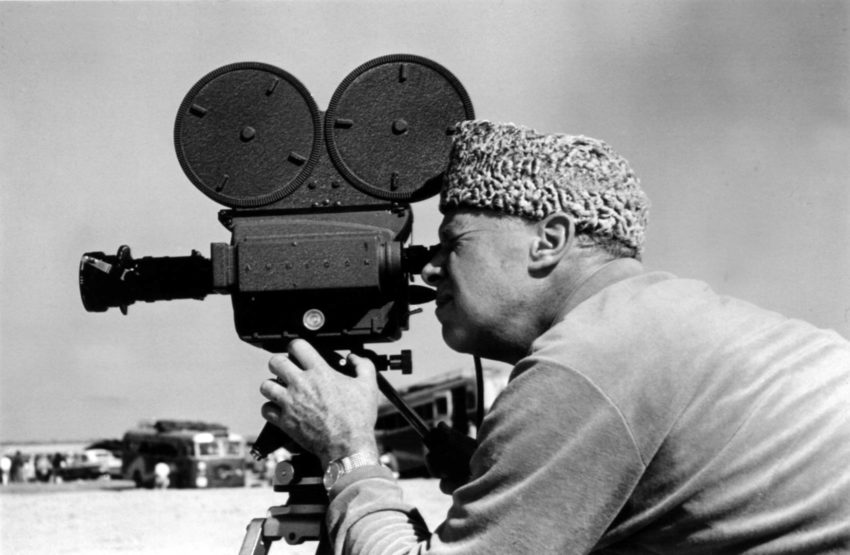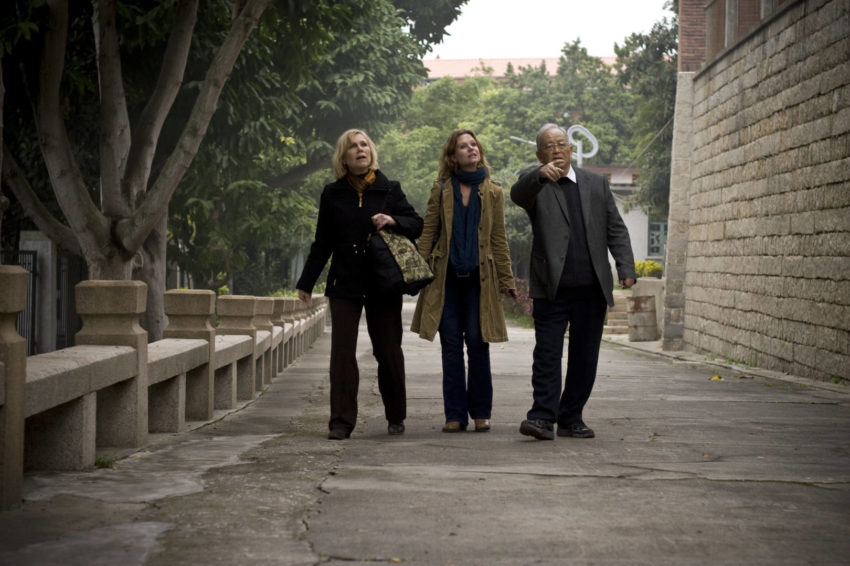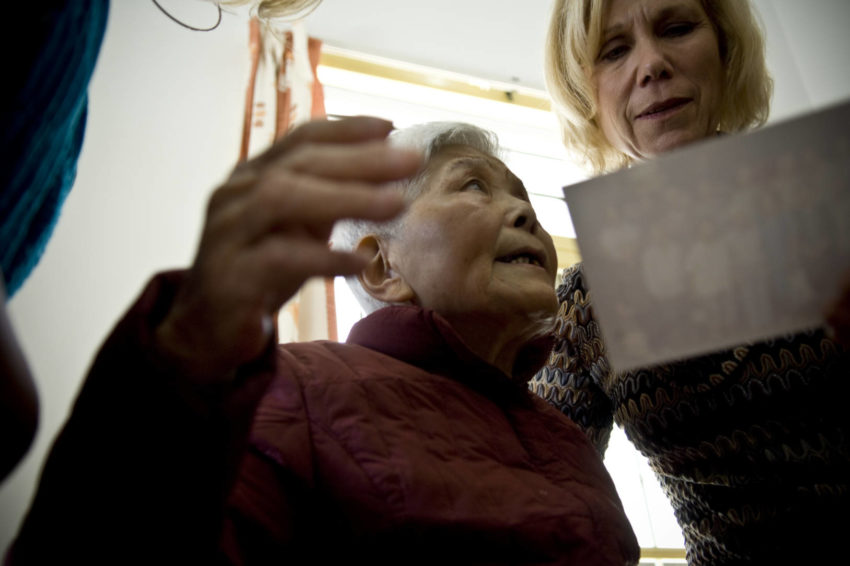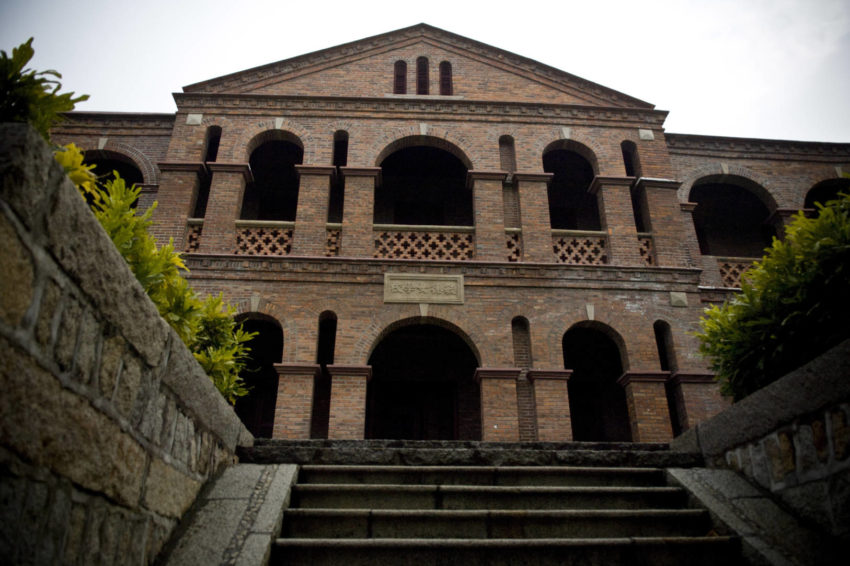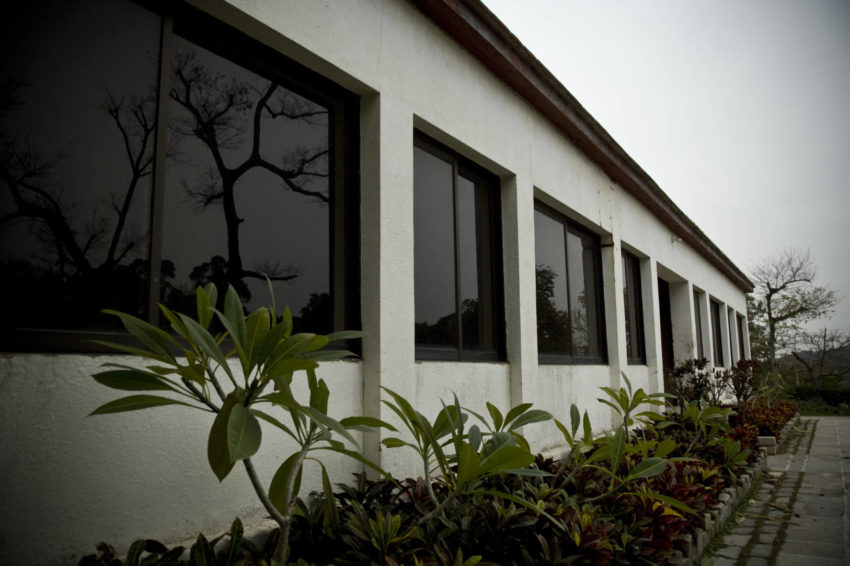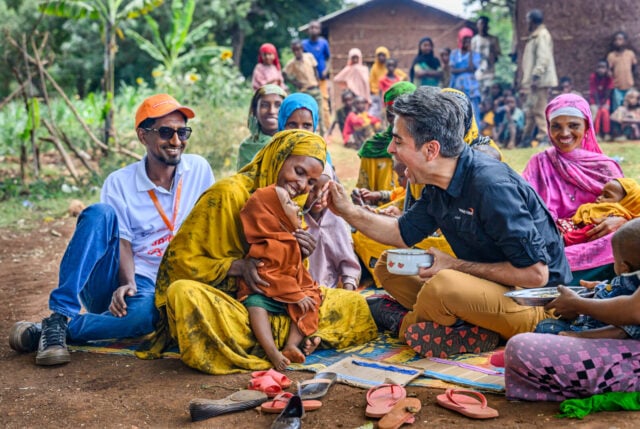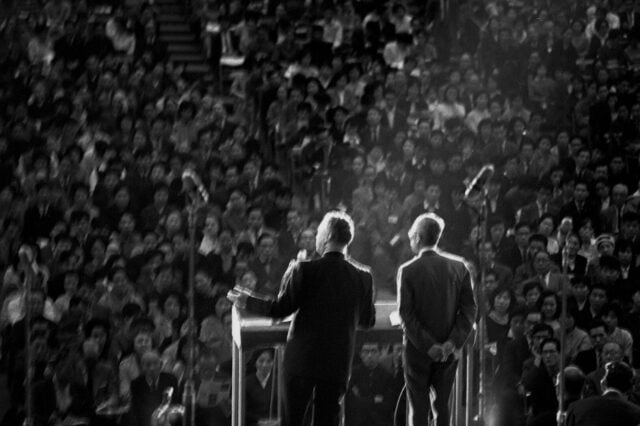We all experience unexpected moments that change our lives, and often, we don’t recognize the moment’s significance until years later. Usually, we are the only ones changed, but sometimes — just sometimes — that moment changes the world. The day my father, Bob Pierce, was challenged by a missionary to help a little girl named White Jade was such a moment.
The story of White Jade begins in June 1947, when 33-year-old Bob Pierce went to China to hold evangelistic meetings for Youth For Christ (YFC). Teaming with another YFC evangelist, David Morken, and Chinese evangelist Andrew Ghi, he shared the gospel in universities, schools, and churches. According to one source, the meetings resulted in 30,000 decisions for Christ.
That summer would not only change the eternal destiny of thousands of Chinese but would also have a profound impact on my father’s life and ministry. Everywhere he went, he saw not only spiritual poverty, but also physical poverty that stunned his Western sensibilities. He also met missionaries responding to that need, challenging his own definition of what it meant to live out his faith.
In Franklin Graham’s book, “This One Thing I Do,” my father reflected on the anguish he felt over what he was seeing: “I’d go to bed at night and say, ‘God, I am not doing anything for anybody! Here are these [missionaries] without any help … I can’t give them anything, and they need everything. What am I supposed to do, Lord?’ ”
God would soon answer my father’s question with another life-changing question. He arrived on the island of Amoy, where he was to speak for a week at the university before returning home. Amoy had been occupied by the Japanese until 1946, and local churches and missionary groups were working to rebuild their schools and churches. Tena Holkeboer, a Reformed Church of America missionary and teacher, invited my father to speak at Iok Tek Girls’ Middle School, one of the first formal girls’ schools in China, located on a tiny nearby island called Gulangyu.
Each morning for a week, my dad hopped on a sampan ferry to make the 15-minute trip across the water to Gulangyu to speak at chapel, and every morning, several girls came forward to pray for salvation. As he had done so often in the States, my father encouraged the new converts to share their Christian faith with family and friends.
God had a plan, not only for Bob Pierce and Tena Holkeboer, but also for the little girl whose story would one day inspire millions to care about the need of one child.
At the end of his time in Amoy, my father went to Tena’s home to say goodbye. She met him at the door with a little girl cradled protectively in her arms. The child had obviously been beaten, and the fiery look in Tena’s eyes left no doubt as to why her students affectionately called her “Auntie Tiger.” “This is White Jade,” said Tena. “When she told her family that she is now a Christian, her father beat her and threw her out into the street. She has lost everything.”
Shocked and feeling utterly helpless, my father asked, “You will take care of her, won’t you?”
“I am feeding as many children as I can,” Tena replied. “The question isn’t what I am going to do. The question is, what are you going to do?” She thrust the child into my father’s arms.
Digging in his pocket, my dad gave Tena his last five dollars, promising to send more when he got home.
“I had turned my back on so much of the need I had seen,” he later reflected the TV show, “This is Your Life,” “but I couldn’t turn away from the need of this one child.”
We know what happened to Bob Pierce and Tena Holkeboer in the years following that fateful moment. In 1950, my father went to Korea where he was confronted with the needs of thousands of White Jades made homeless by the war. Again, God challenged his heart to do something about it. World Vision and later, Samaritan’s Purse, were his responses to that challenge. Tena Holkeboer, forced to leave China by the communists in 1948, went to Singapore where she continued her work as a teacher and missionary.
But what about the courageous little girl who went home to share her newfound faith and lost her family because of it? How did she survive once my parents’ monthly support could no longer reach her? Did she ever have a family of her own? And perhaps most important to this evangelist’s daughter, did the faith that had cost her so dearly hold her steady through the years of darkness to follow?
In January 2010, my daughter, Michelle Allsopp, and I flew to Amoy (now called Xiamen) in search of the answers to those questions. For me, the trip was the fulfillment of a long-held dream to follow in my father’s footsteps and find the spot where he had heard a challenge that had changed his life forever.
Our first view of Gulangyu from the airplane revealed a closely-knit patchwork of tenements, shops, and open markets sewn together by threads of narrow streets. Looking down on the rooftop gardens and clotheslines with brightly colored laundry, it was easy to imagine what the island looked like when my father saw it more than 60 years before. Then the plane banked and we saw the towering skyscrapers and apartment buildings that line the harbor, and the illusion was broken. Xiamen, which is connected to the mainland by four bridges and an undersea tunnel, is now a modern city with designer shops, gourmet restaurants, and a university with 40,000 students.
Dr. William Brown, a professor at Xiamen University and the author of many books on Amoy and Gulangyu history, met us at the airport and served as our guide. Before the trip, I had emailed Dr. Brown, who has lived on Amoy for more than 20 years, and he offered to help us. He became an invaluable resource, setting up interviews and getting the word out through the media that we were coming.
Over the next five days, Michelle and I explored the area, walking the mile from our hotel to the waterfront where we caught the ferry between Amoy and Gulangyu. Far from the battle-scarred rock I had imagined, Gulangyu today is a beautiful vacation destination with tree-lined streets and dozens of white sand beaches. The islet can be walked in a couple of hours — no cars or motorcycles are allowed. It seemed amazing that God had chosen this tiny speck in the ocean as “ground zero” for two of the world’s largest Christian relief organizations.
We stepped off the ferry and into the China that my father had written about. Narrow streets were lined with shops that offered everything from buffalo-bone hair combs to seafood so fresh it would wiggle out of your hand. Workers in wide-brimmed coolie hats swept the streets with brooms made of leaves, and men grunted for us to get out of the way as they strained to pull carts piled high with everything from rice bags to building materials.
Of course, every little girl we saw reminded us of White Jade. Small as the island is, we knew that there wasn’t a street she hadn’t walked or a storefront she hadn’t passed. By our best calculations, White Jade would now be in her late 70s, and we couldn’t help but look at every gray-haired grandmother and wonder, could this be her?
Bill Brown had arranged for us to meet with some of Tena’s former students, now residents in a nursing home. “Miss Holkeboer was very strict and could have a temper,” confided Lin Manyue, 86. “But we all knew that she loved us. She would do anything to protect her girls.”
I thought of Bob Pierce being confronted by a furious Tena over the pain he had inadvertently caused one of “her girls” and nodded. I told Lin Manyue about White Jade, hoping she would remember a student Tena had cared for in a special way. The old woman smiled and shook her head. “There were many of us who needed help in those days. In fact, you could be describing me … only it wasn’t Miss Holkeboer who helped me. It was one of the other teachers. I wouldn’t have eaten if she hadn’t shared her rice with me.”
Lin Manyue went on to explain that the other students didn’t know that she was getting this special help: “It wasn’t something we talked about.” We began to realize that identifying White Jade would be more difficult than we had hoped. Her circumstances were not unique, and Tena would have been careful not to treat her differently in front of the other girls.
As we got up to leave, Lin Manyue grabbed my hand and with tears shimmering, she said, “I want you to know that I never forgot the things that the missionaries taught me. Even in the years when I had to do many things to survive …” Her voice caught, and the tears spilled over. “In my heart, I never forgot. No matter what. … I carried it all in here,” she said, touching her heart.
Michelle and I wiped our own tears away as we hugged the older woman goodbye. I had wondered if the seedling faith that had been planted in White Jade’s heart could have survived the rejection of her family and the difficult years that followed. Lin Manyue had given me my answer.
Our next stop was the home of Lin Shiyan, the son of Tena Holkeboer’s cook, who had grown up in Tena’s house. At 82, he has a sharp mind and seemed to remember those long-ago days as though they were yesterday. If anyone would be able to help us in our search for White Jade, it would be him. “Do you remember a little girl named White Jade?” I asked. “She may have stayed with Tena after my father left.”
We all held our breath as Mr. Lin thought and then slowly shook his head. “No, I don’t remember any girl like that. She would have stayed at the school, not in the house. And White Jade was a common nickname for girls, like ‘pretty flower’ or ‘sweet girl.’ It wouldn’t be her real name.”
Disappointing as it was that Mr. Lin could not help us identify White Jade, he proved to be a wealth of information about life on the island. As he walked with us up the steep paths leading to Iok Tek Girls’ School and San Luo, the house where Tena Holkeboer and the other teachers lived for 30 years, he told us stories about his childhood. Showing us a deep shaft that had been boarded up for years, he said, “This was the well where I used to draw water for Miss Holkeboer. I would carry it in buckets several times a day.” Surprised, I looked up the steep road and thought of the many African children I have met who must carry water every day to survive. Obviously, life on Gulangyu had not been so different. Did White Jade also have to carry water?
He also talked about the years when the Japanese occupied the island during World War II. “Many people were killed. Some people tried to swim away, and the soldiers would shoot them in the water,” he said. This, too, was a part of the world White Jade had known. I thought of the children World Vision serves in places like Darfur, Pakistan, and the Middle East.
We arrived at the expansive grounds that were once home to Gulangyu’s missionaries and walked down a wide, tree-lined lane leading to the picturesque beaches that had made this island a popular resort in the early 1900s. We reached an imposing two-story, red brick building. Wide arches ran the length of the building, framing a row of shuttered windows and doors. Over the center arch was etched five Chinese symbols: Iok Tek Girls’ Middle School.
We walked up the wide front steps and tried the door. Locked! It seemed impossible that we had come so far only to have to content ourselves with peeking through the windows.
Then Michelle called, “Over here!” She had found another door.
Only a few weak streams of light leaked through the heavy wooden shutters as we stepped into a large, open room that had been stripped down to the bare walls and cement floor. “This was the meeting hall. It is where your father would have spoken,” Mr. Lin said softly.
The room was cold and heavy with the smell of mold and dust. But it wasn’t hard to imagine rows of chairs filled with bright-eyed young girls attentively listening to their devoted teachers. I walked over to where the platform would have stood and closed my eyes. Suddenly, I could hear the familiar voice of a young evangelist, preaching about the love of God and inviting all to receive the gift of life through Jesus Christ. My tears came freely as I imagined one little hand reaching up to receive the gift.
Certainly more than one person responded that day to my father’s invitation. But God had a plan, not only for Bob Pierce and Tena Holkeboer, but also for the little girl whose story would one day inspire millions to care about the need of one child. As we left the school to walk the short path to Tena’s home, I couldn’t help but think about the next part of White Jade’s story. The faith she had so joyfully embraced had been met with anger, cruelty, and rejection. In her pain and despair, the girl had run to the one place she knew she would be safe — the arms of Auntie Tiger.
Arm-in-arm, Michelle and I walked up the stone driveway. Tena’s former house had been gutted for a major restoration, and the windows and doors were nothing more than gaping holes under the red tile roof. At the top of the stairs, I stood trying to picture the heavy carved doors on which my father would have knocked. Mr. Lin’s mother would have opened the door. My father had probably stopped by Tena’s home for tea several times while on the island. But that morning had been different. That morning, there had been no tea. That morning, God chose to put a name and a face on poverty: “This is White Jade.”
As I stood on the spot where my father had held White Jade, I had to smile. Wouldn’t Tena have been amazed if she had known then what God would do through her challenge? For that matter, wouldn’t my dad?
But most of all, I thought about White Jade and the difference her life would make. For 60 years, World Vision has been putting a name and face on poverty, sharing the needs of children who live every day as hungry, sick, hurting, and alone as she was. And every day, we ask the question: What are you going to do about it?
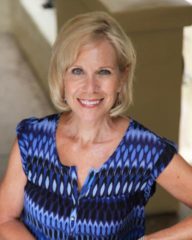
Marilee Pierce Dunker travels the world as an ambassador for World Vision, the organization her father, Bob Pierce, founded in 1950. Like he did, she shares stories, pictures, and personal reflections, bearing witness to the extraordinary ways God is using his people to share the gospel and care for the poor.
Visit World Vision’s Speakers Bureau site to request Marilee or another World Vision speaker to present at your upcoming event.
